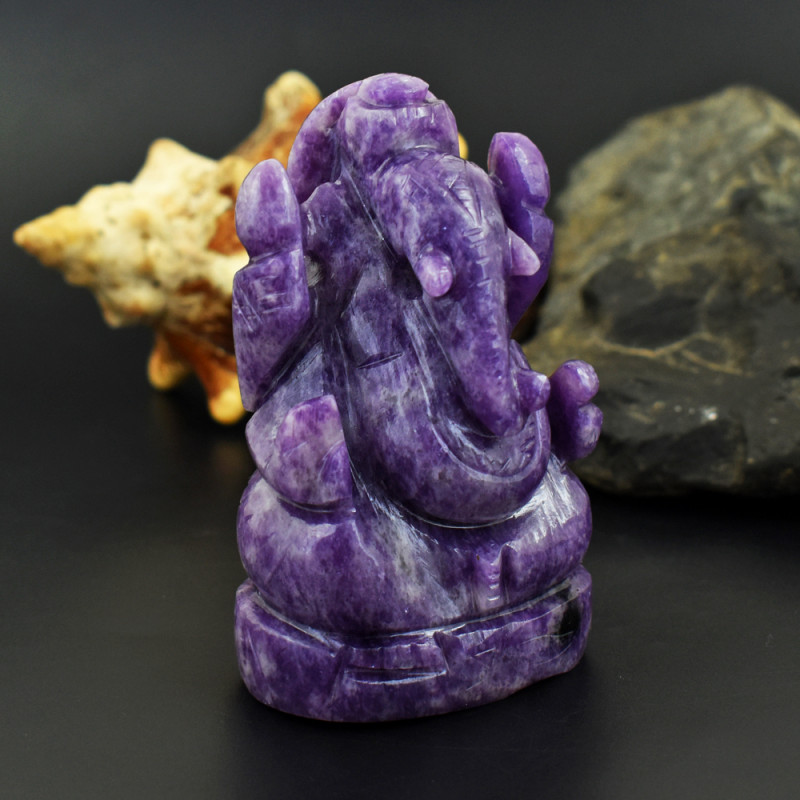
白云母宝石:特性、含义、价值等
 白云母是一种无色至棕褐色、常闪闪发光的云母宝石。白云母的工业用途可以追溯到几百年前,主要原因是它闪亮的光泽。
白云母是一种无色至棕褐色、常闪闪发光的云母宝石。白云母的工业用途可以追溯到几百年前,主要原因是它闪亮的光泽。
白云母稀有还是常见?白云母非常丰富——它是除黑云母之外最常见的云母矿物。
白云母究竟有何独特之处?我们将为您揭晓白云母的各项特性、疗愈功效、价格和历史。

关于白云母石
白云母是云母家族中储量丰富且重要的矿物。白云母的其他别名和绰号包括:
白云母
普通云母
钾云母
鱼胶
白云母还有许多其他历史名称,但我们将在历史部分介绍这些名称。
从占星学角度来看,白云母是狮子座的星座石。它在命理学中也与数字1相符。
白云母的用途
这种矿物的一些独特性质包括珍珠般的白云母光泽以及耐腐蚀、耐风化和耐热的特性。
既然白云母拥有如此宝贵的特性,那么它的用途是什么呢?这种矿物用途广泛,例如:
闪亮的汽车漆
丝滑壁纸
雷达和激光
钻井泥浆
润滑剂
接缝水泥
焊条
轮胎脱模剂
电绝缘体(例如电子芯片)
高温玻璃替代品
油漆、塑料和橡胶的填料
闪亮化妆品
隔热防火干墙和石膏墙板
白云母具有哪些特性,使得其用途如此广泛?

白云母规格和特性
白云母是一种水合氢氧化铝氟化钾层状硅酸盐,其化学式写作KAl2(AlSi3O10)(F,OH)2,化学式写作(KF)2(Al2O3)3(SiO2)6(H2O)。不过,杂质很常见。
钾可以用铯、钠或铷取代。铝可以用钒、钛、铁、镁、锂或铬取代。最后,氢氧化物可以用氯或氟取代。
一些替代物会导致矿物发生变化。例如,硅灰石这种矿物的二氧化硅含量高于铝,而铝则部分被铁或镁取代。
与所有云母矿物一样,白云母的晶系是单斜晶系。
白云母矿物通常呈块状至片状晶体形态。你通常会在岩石中看到由被称为“书本”的薄层结晶片组成的大量混合物,以及闪亮的颗粒或薄片。
白云母还可以呈现出迷人的形状,例如被称为“星光白云母”的星形晶体集合体。当辐射状的桌状晶体形成球形集合体时,它被称为“星光白云母”。
致密的白云母被称为“硅白云母”,而结构非常细密的致密、蛇纹石状白云母被称为“达莫尔石”。
以下是剩余的白云母特性:
莫氏硬度:平行于[001]方向2-2.5,垂直于[001]方向4
颜色:无色、白色、银色;可以是粉色、黄色、绿色、浅棕色
晶体结构:单斜
光泽:珍珠光泽、丝绸光泽或玻璃光泽;解理面上呈珍珠光泽
透明度:透明至不透明
折射率:1.552-1.618
密度:2.76-3.00
解理: 完美基底 [001]
断口:云母
条痕:白色
发光:无
多色性:在彩色标本中存在但较弱
双折射率:0.035-0.042
白云母的种类
虽然白云母不像单颗宝石那样常见,但它也有一些更常见的半宝石品种。下文我们将介绍这些品种,以及宝石领域中不太常见的矿物品种。
 上图:锂云母雕刻
上图:锂云母雕刻
宝石品种
一个例子就是铬云母。铬云母,又称“铬云母”,是一种华丽闪亮的绿色白云母,富含铬。它也被称为“绿色白云母”。
另一种富含铬的品种是绿辉石,它常常使白云石呈现绿色。它的名字源于其产地为美国加利福尼亚州马里波萨。
与绿泥石相关的一种岩石是绿泥石,它主要由绿泥石组成,用作装饰石。这种著名的南非石头还含有钠长石、金红石、滑石、石英、刚玉、绿泥石、珍珠石和水硬铝石。
另一种宝石是锂云母,它富含锂,呈玫瑰色、淡紫灰色或紫色。锂云母常被雕刻成装饰品或小雕像。有些人认为锂云母只是云母的一种,而另一些人则认为它是白云母的亚种。
其他白云母矿物品种
下面,我们将介绍在矿物中比在宝石中更常见的所有白云母品种。
其中一些人会提到伊利石,这是一种浅灰色、银色或绿灰色的云母矿物,被认为是缺钾的白云母。
其余品种如下:
Avalite :富铬伊利石品种
钡钒白云母:含钡和钒的品种
含钡白云母:富钡品种
含钡和铬的白云母:含有钡和铬的品种
板岩:绿色、板状、略含铬的品种
Chacaltaîte :类似于绿泥石的绿色品种
伊利石玉:致密的伊利石品种,内含赤铁矿,形成红色带
含铁白云母:含铁(Fe2)的品种
锂白云母:含3-4%氧化锂的品种
富镍和富铬伊利石:以镍为主的伊利石品种,氧化镍含量高达近 23%,氧化铬含量高达 11%
含铷白云母:含 1% 或更多氧化铷的品种
谢尔尼克石:粉红色品种
绢云母:白色至浅绿色云母的细粒集合体,通常是白云母,但很少是绢云母
含钒白云母:含钒、以铝为主的品种
锰矿:含锰绢云母或方柱石和白云母假象
含锌白云母:含锌的品种
呼,种类真多!我们先别管矿物了,来看看白云母在不同历史时期的含义和意义。

白云母的含义和历史
白云母象征着自我反省和自省,也代表着启蒙、灵感和新的视角。
在形而上学的灵性中,人们相信白云母能够激发星体旅行、直觉和远见的才能。据说它还能促进精神觉醒,并与更高层次的神灵沟通。
历史
白云母的现名源于莫斯科玻璃(Muscovy glass),这是一种用白云母制成的俄罗斯玻璃,以俄罗斯莫斯科公国命名。14世纪,该地区是白云母玻璃的主要产地,主要用于熔炉内部照明。
恰当地说,莫斯科人 (大写) 也指俄罗斯莫斯科人。
在这种矿物被称为白云母之前,它被称为“鱼胶”。鱼胶(Isinglass)或艾森玻璃(eisenglass)在德语中意为“铁玻璃”,指的是类似于当今钢化玻璃的透明窗户材料。
虽然这种玻璃在中世纪(公元400-1400年)就很流行,但其名称直到伊丽莎白时代(公元1558-1603年)才出现。该名称的最早记录出现在1568年英国诗人乔治·特伯维尔(George Turberville)写给英国驻俄大使秘书托马斯·伦道夫(Thomas Randolph)和伊凡雷帝(Ivan the Terrible)的信件中。
话虽如此,白云母当时还不是正式的名称。直到1794年,德国矿物学家约翰·戈特弗里德·施迈瑟(Johann Gottfried Schmeisser)在其著作《矿物学体系》(System of Mineralogy)中发表后,白云母才正式成为正式名称。
除了“莫斯科玻璃”之外,白云母的其他名称还有:
猫银
Lapis specularis(拉丁语,意为“石镜”)
微光
鱼胶
安东尼特
狄狄米石
莫斯科维托夫
癌碱
阿莫金索斯
斜长石
桑德伯尔特
如今,白云母为各种美容产品提供光泽,并用于水晶治疗!

白云母的治疗功效
白云母与所有宝石一样,可以用作疗愈石,其部分功效受其颜色影响。与其他白色宝石一样,白色或无色白云母可以提升专注力,并增强其他晶体的功效。
此外,像白云母这样的白色宝石,是能量最强的顶轮石,顶轮是最高能量中心。当白云母打开顶轮时,它能带来完全的精神觉知和沟通。
身体康复
从物理角度来说,白云母可以治疗:
失眠
眩晕
慢性疼痛
认知困难
头痛
体重维持
情绪疗愈
从情感角度来看,白云母被认为能够帮助人们平静下来,消除愤怒、自我怀疑和焦虑等负面情绪。据说它还能帮助人们轻松地理解和表达自己的情绪。
白云母宝石特性
白云母的价值取决于其颜色、切割、透明度和光泽。
颜色:尽管白云母有“白云母”的绰号,但白云母的颜色远不止无色、白色和银色。杂质可能会使白云母呈现粉色、绿色、黄色和棕色。
切工:由于白云母在莫氏硬度表上的硬度非常低,且其解理完美,因此无法刻面成宝石。白云母可能会被雕刻,或作为未切割的原始样本出售。
透明度:透明的白云母标本最有价值,而不透明的标本最不值钱。
光泽:对于白云母来说,珍珠光泽或丝绸光泽比玻璃光泽更有价值。
尺寸对白云母的价值影响不大,因为白云母的体积可能很大。在印度发现的一些最大的白云母片尺寸为16.5英尺 x 10英尺(5米 x 3米)。

白云母的形成和来源
白云母通常形成于富含粘土的岩石经历区域变质作用(高温高压下的转变过程)时。岩石内部的粘土矿物会转变成细小的云母颗粒,并逐渐长大。
当非粘土矿物经历类似的改变时也会形成它,例如长石、蓝晶石或黄玉。
你可以在片岩、伟晶岩、花岗岩和片麻岩中找到白云母。这种矿物也是过铝岩(以氧化铝为主的火成岩)的基石。
采矿地点
白云母在世界哪些地方有分布?白云母遍布世界各地,因此我们不会一一列出每个产地。一些重要的白云母产地包括:
巴西
加拿大
印度
巴基斯坦
秘鲁
瑞士
美国(亚利桑那州、加利福尼亚州、康涅狄格州、缅因州、北卡罗来纳州、宾夕法尼亚州、南达科他州、德克萨斯州)
那么,白云母值多少钱?

白云母的价格和价值
幸运的是,白云母的储量丰富,使其成为一种价格实惠的宝石。
最常见的选择是白云母原石,不含其他宝石的石板价格通常在10美元左右。白云母与其他宝石组合的价格取决于其所含宝石的价值。
白云母的宝石级品种价格略高,但仍然价格实惠。小颗切割的绿云母价格在 3 至 6 美元之间。绿云母原石和凸圆形宝石每克拉价格不到 1 美元,锂云母凸圆形宝石每克拉价格约为 0.50 美元。
白云母的保养和维护
白云母并不脆,但质地柔软。这些特性加上其完美的解理,使得对白云母进行温和的宝石护理至关重要。任何种类的白云母珠宝都应该进行保护性镶嵌。
切勿将白云母浸泡在水中,因为它会吸收液体并开始分解。最好、最安全的方法是使用软毛、干燥的电动牙刷。
将白云母与其他宝石分开放置,以免造成划痕。
对莫斯科人感到惊奇吗?
您的家中或许有白云母,无论是化妆品还是石膏板。但白云母宝石更能带来精神上的益处,它们的光芒能激发您内在的光芒!
搜索Gemstone Encyclopedia
最新的文章
棕榈象牙雕刻,又称植物象牙,是象牙的天然替代品,取自南美洲棕榈树(Phytelephas palm)的果实,并以符合伦理的方式采集。本指南将带您全面了解棕榈象牙!
15th Jan 2026
彩虹格纹日光石是一种长石,由于内部含有各种包裹体,呈现出三种绚丽的光学效应。它绚丽多彩的光泽和格纹图案使其成为收藏家梦寐以求的珍宝!
12th Jan 2026
文章分类
How To's is where you will find helpful articles from gem Rock Auctions on how to cut gemstones, select gemstones and buy gemstones.
9文章数
